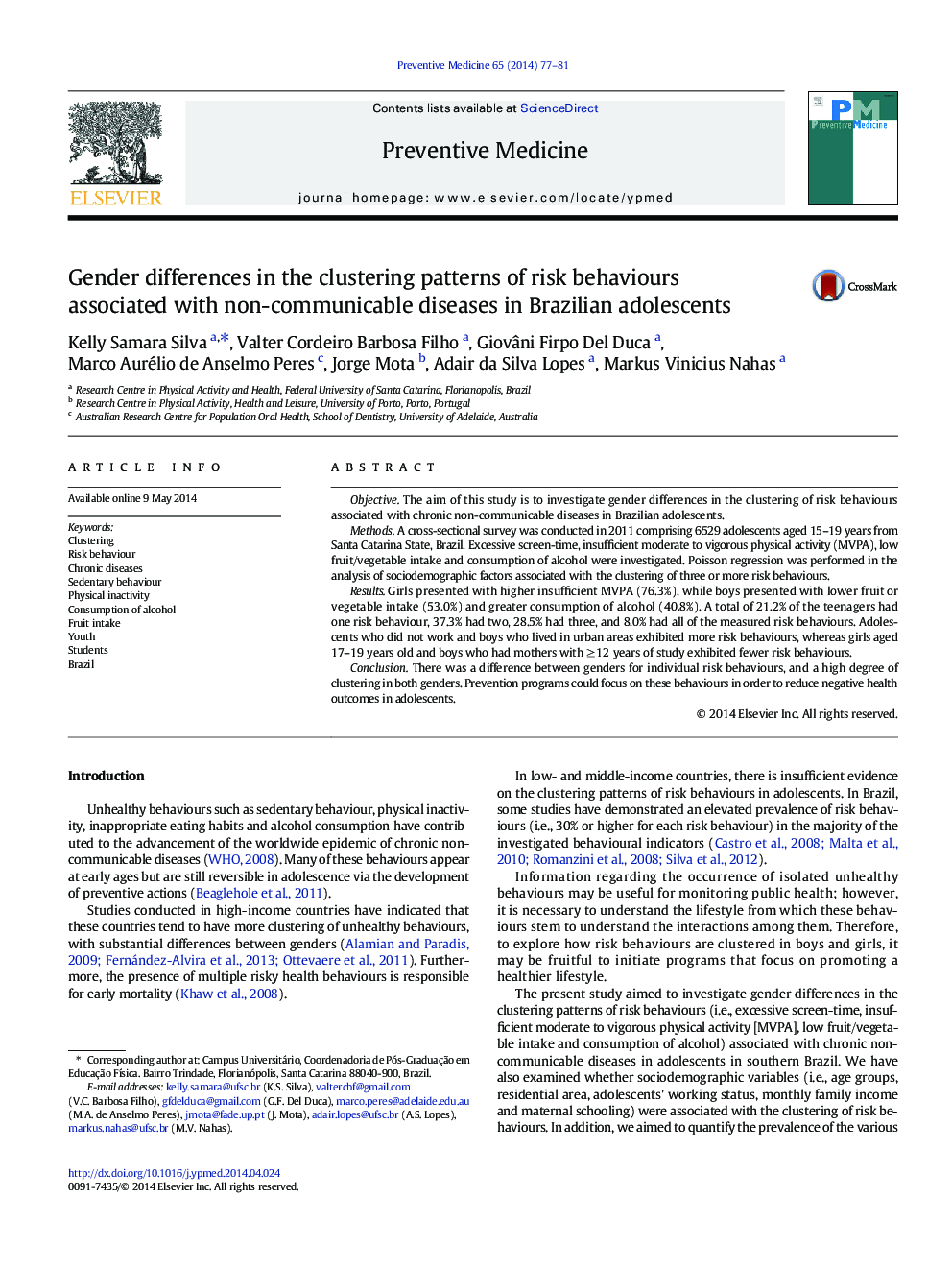| کد مقاله | کد نشریه | سال انتشار | مقاله انگلیسی | نسخه تمام متن |
|---|---|---|---|---|
| 3100505 | 1581649 | 2014 | 5 صفحه PDF | دانلود رایگان |
• Girls were more inactive, and boys had lower fruit intake and greater alcohol intake.
• More of one third of the boys and girls accumulated at least three risk behaviours.
• Adolescents who did not work and boys of urban areas had more risk behaviours.
• There was less risk among girls aged 17–19 and boys with higher maternal schooling.
ObjectiveThe aim of this study is to investigate gender differences in the clustering of risk behaviours associated with chronic non-communicable diseases in Brazilian adolescents.MethodsA cross-sectional survey was conducted in 2011 comprising 6529 adolescents aged 15–19 years from Santa Catarina State, Brazil. Excessive screen-time, insufficient moderate to vigorous physical activity (MVPA), low fruit/vegetable intake and consumption of alcohol were investigated. Poisson regression was performed in the analysis of sociodemographic factors associated with the clustering of three or more risk behaviours.ResultsGirls presented with higher insufficient MVPA (76.3%), while boys presented with lower fruit or vegetable intake (53.0%) and greater consumption of alcohol (40.8%). A total of 21.2% of the teenagers had one risk behaviour, 37.3% had two, 28.5% had three, and 8.0% had all of the measured risk behaviours. Adolescents who did not work and boys who lived in urban areas exhibited more risk behaviours, whereas girls aged 17–19 years old and boys who had mothers with ≥ 12 years of study exhibited fewer risk behaviours.ConclusionThere was a difference between genders for individual risk behaviours, and a high degree of clustering in both genders. Prevention programs could focus on these behaviours in order to reduce negative health outcomes in adolescents.
Journal: Preventive Medicine - Volume 65, August 2014, Pages 77–81
